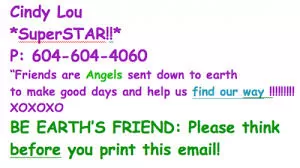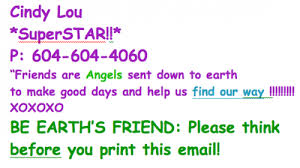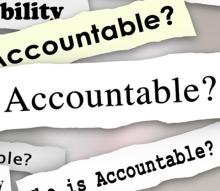
Dear OITE Career Blog Readers,
Writing effective and professional e-mail correspondence is an important skill to master early on in your career. The OITE has created a comprehensive guide on “How to Write Effective Professional Email” to help guide you, but there are many sections where one can go awry, including: subject line, greeting and the actual body of the email. Today though, we will focus on email closings and signature blocks.
What’s in an e-mail sign-off? To many, those few final words are extremely important and tricky to get right. Your closing is often where relationships, hierarchies, and your overall tone is established and/or clarified. Here are some common possibilities (from most formal to informal):
- Sincerely,
- Thank you in advance.
- Best regards,
- Kind regards,
- Warm regards,
- Fondly,
- Enjoy your weekend!
- Cheers!
- xoxo,
- Love,
- Hugs,
- Take it easy…{insert bro, dude, and any other casual identifier}
- Any smiley face emoticon [:-) or emoji
- Quotes from Gandhi or some other inspirational figure
- Biblical verses
- Using work email to campaign for a political candidate or cause
- Using too many different colors and styles of font
- Including every possible way the reader can be in touch with you
- Here is an example of what NOT to do:

- Best– This is the most ubiquitous. It’s widely accepted. I recommend it highly and so do the experts. OITE response: Widely used, but depending on the tone of the rest of the email, this can also come across as rude or a curt brush off.
- Best Regards– More formal than the ubiquitous “Best.” I use this occasionally.
- Thanks- Lett says this is a no-no. “This is not a closing. It’s a thank-you,” she insists. I disagree. Forbes Leadership Editor Fred Allen uses it regularly and I think it’s an appropriate, warm thing to say. I use it too.
- Thanks!– This rubs me the wrong way because I used to have a boss who ended every email this way. She was usually asking me to perform a task and it made her sign-off seem more like a stern order, with a forced note of appreciation, than a genuine expression of gratitude. But in the right context, it can be fine.
- Thank you– More formal than “Thanks.” I use this sometimes.
- Thank you!– This doesn’t have the same grating quality as “Thanks!” The added “you” softens it.
- Rushing– This works when you really are rushing and may have made typos or written abbreviated sentences. It expresses humility and regard for the recipient. OITE response: Is this really necessary? Be careful of what you send in haste.
- Your name– Terse but just fine in many circumstances. Probably not a good idea for an initial email. OITE response: Disagree – sometimes you just do not need one!
- High five from down low– A colleague shared this awful sign-off which is regularly used by a publicist who handles tech clients. An attempt to sound cool, which fails.
- Sent from my iPhone– This may be the most ubiquitous sign-off. It used to bother me but I realize that it explains brevity and typos. I’ve erased it from my iPhone signature because I don’t like to freight my emails with extra words, and in many instances I don’t want the recipient to know I’m not at my desk. But maybe I should restore it. The same goes for automated messages on other devices. OITE response: Go to your setting and turn this off; nobody needs to know you are sending email from your blackberry or smartphone.
- Typos courtesy of my iPhone– Slightly clever but it’s gotten old. Better to use the automated message.
- Sent from a prehistoric stone tablet– I laughed the first time I read it but then the joke wore thin.
- Yours Truly– I don’t like this. It makes me feel like I’m ten years old and getting a note from a pen pal in Sweden.
Categories
Communicating




